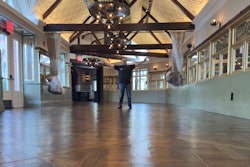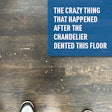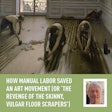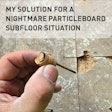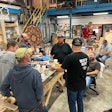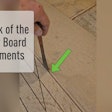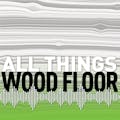
When using an architect’s or designer’s plans for interior remodeling work, you will sometimes see the term “match existing” when repairing or replacing a portion of the existing wood floor. Here is some of my advice after decades of doing wood flooring projects myself as well as performing inspections on other professionals’ wood flooring work.
Regardless of the motivation for this instruction, know that it may not be easily performed. In fact, it is nearly always a very difficult task. Because wood changes color and texture over time, trying to match new wood flooring with an older wood floor can’t be done without considerable skill regarding different stains and finishes and how to blend colors.
Please don’t twist yourself into a rhetorical pretzel concocting a “reason” for the client as to why it doesn’t match when you apply stain and or finish to the entire floor. The “why” is not even close to as important as the “how” to fix the problem.
The best solution is to develop the skills of a faux artist (or hire one) to get the new boards to blend with the old. It’s very time consuming and very difficult to estimate the actual time required. If you use fixed pricing, there are three possible outcomes:
1) You overcharge the customer and you are happy with the money received.
2) You don’t charge enough and work for peanuts, but the customer is happy.
3) You get the cost and the price for the service right, and both you and the customer are happy.
My suggestion is to consider using an hourly rate to charge for this extra service.
Matching is especially problematic if there is an existing old floor in the existing building and there is an extensive renovation with a new wood floor or an addition with new wood floor. Matching the more porous and oxidized old flooring is problematic unless you paint the floors with opaque paint. Often the reason for specifying “match existing” is to minimize the cost of refinishing the older flooring. This eliminates the budget for time-consuming (read “more expensive”) texturing and color-matching techniques.
Wood floor sanding and finishing is primarily done from a standing position. You are going to be on your hands and knees to color-match that new flooring where the repairs are small or you tooth the new flooring into the old where a wall or cabinets have been moved. It’s a completely different set of skills while you are crawling around on your hands and knees. Does this sound like a good time to you?
In summary, if you agree to do a repair and refinishing job that is specified as “match existing,” there could be some major issues with having a satisfied customer and getting paid if it doesn’t match perfectly. Be very careful about what you agree to do when you take a job, and what you charge to do it.

















